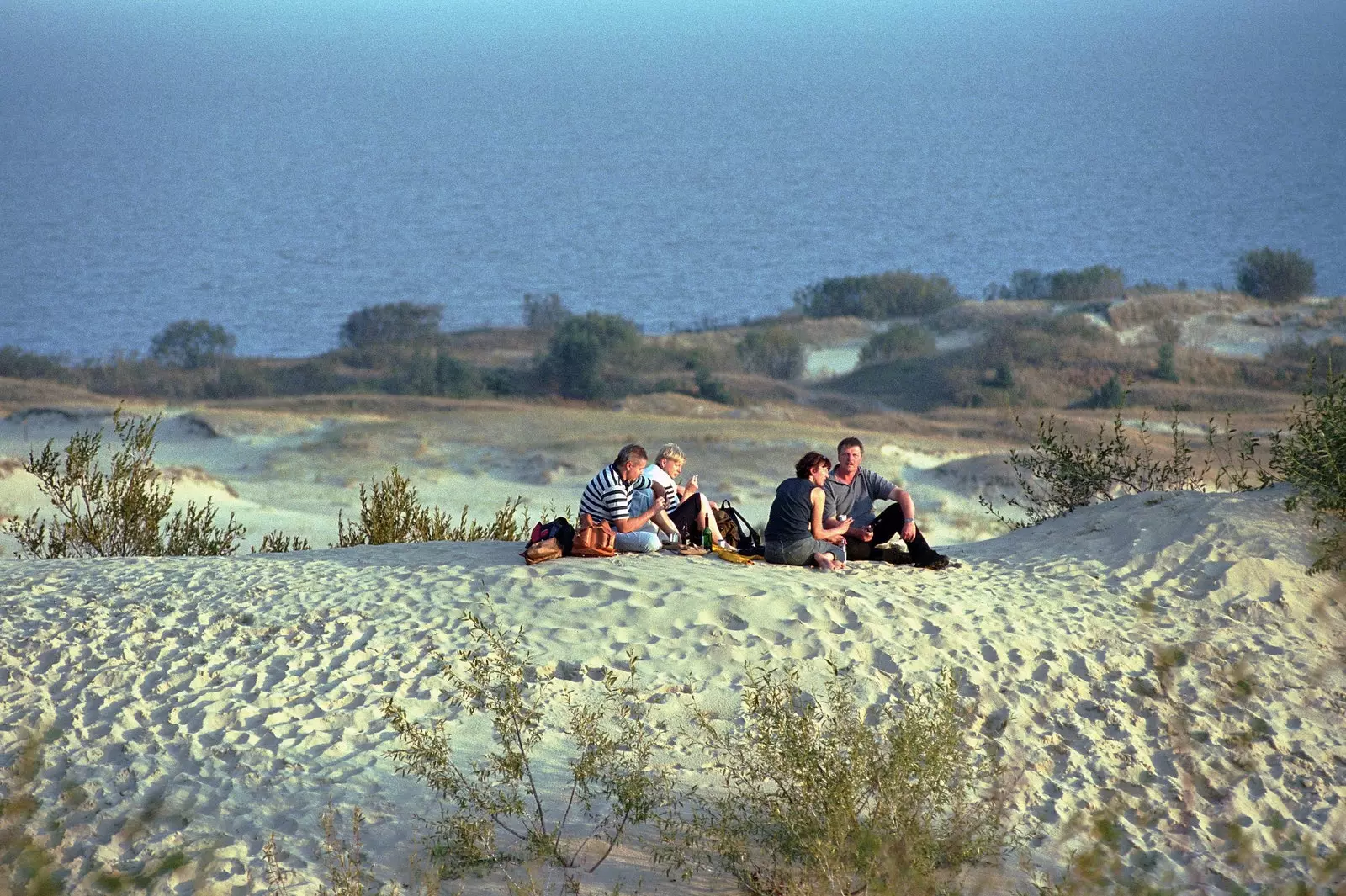
The Great Dune of the Curonian Spit
The Curonian Spit It is a whim of the territory that shows that on a sand dune fit two countries, nine towns and cities, several museums , a UNESCO heritage Y two natural parks, with space for bikes and cars . But let's go in parts.
It is the largest set of dunes in Europe . The average height is 35 meters , but some go as high as 60. As if that wasn't rare enough, just look at the map to understand the quirks of this place. Almost a hundred kilometers of a thin strip of land (its widest point is less than four kilometers) that are embedded in the Baltic Sea to form one of the most curious borders that can be visited. It leaves from the Russian exclave of Kaliningrad to almost reach the Lithuanian city of Klaipeda , to which you must navigate by ferry.
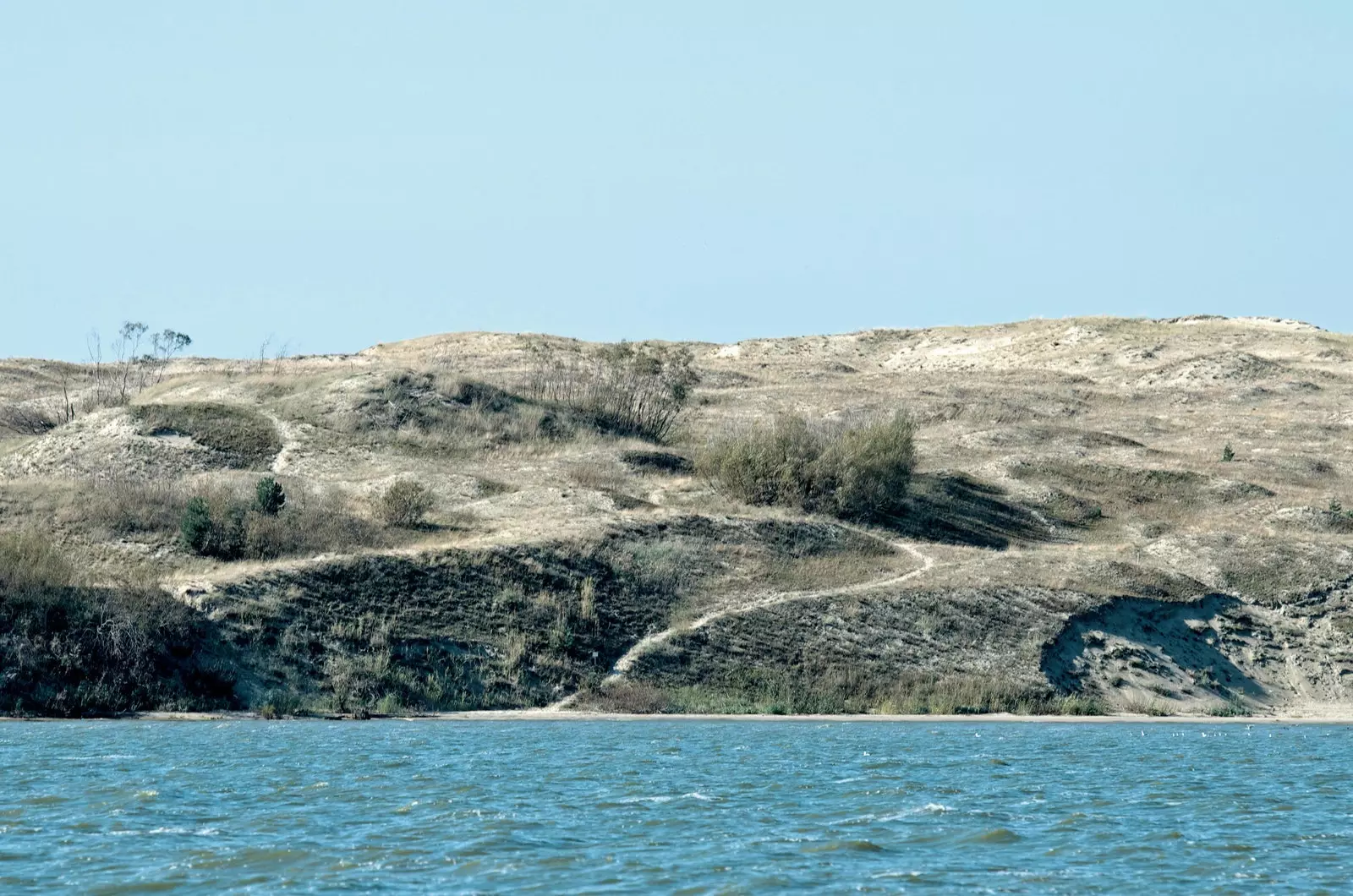
View of the coast of Nida from the sea
On one side, the open sea; to the other, the closed sea or the Curonian Bay . And in the middle, a fence and a radar system that trace the happy border. And it is that the most interesting thing is precisely on both sides of it. So it does not make it easy for us to visit all of this UNESCO World Heritage Site , considered an example of the integration of humans in nature and its ability to reverse an impact that seemed irreversible. In fact, the rich biodiversity that we see today is the result of the reforestation carried out by the Prussian government, to stop the advance of the dunes that came to engulf entire towns in the 16th century, when their flora was used as wood for the site of Königsberg (Kaliningrad).
On the Lithuanian side, we find the resort town of Nida . He takes refuge towards the interior part of the isthmus (the bay), where bathing is prohibited. However, it offers kilometers of fine white sand towards the Baltic. The harsh climate can make the summer taste little, but citizens of the Baltic republics, Germans and Poles fill this area every summer . Until 300 thousand people can come to welcome the city in its residential areas and resorts. Its small port and the typical wooden houses give it a picturesque touch, which makes us forget that we are on a dune.
Is in nest where most of the cultural facilities are concentrated. The main one is the house where Thomas Mann spent his summers , which offers a journey through the life of the writer and part of the correspondence with his brother. The most interesting thing is the construction itself, typical of the region and in perfect condition. Nearby we can find the amber museum, whose fame is disputed with neighboring Kaliningrad.
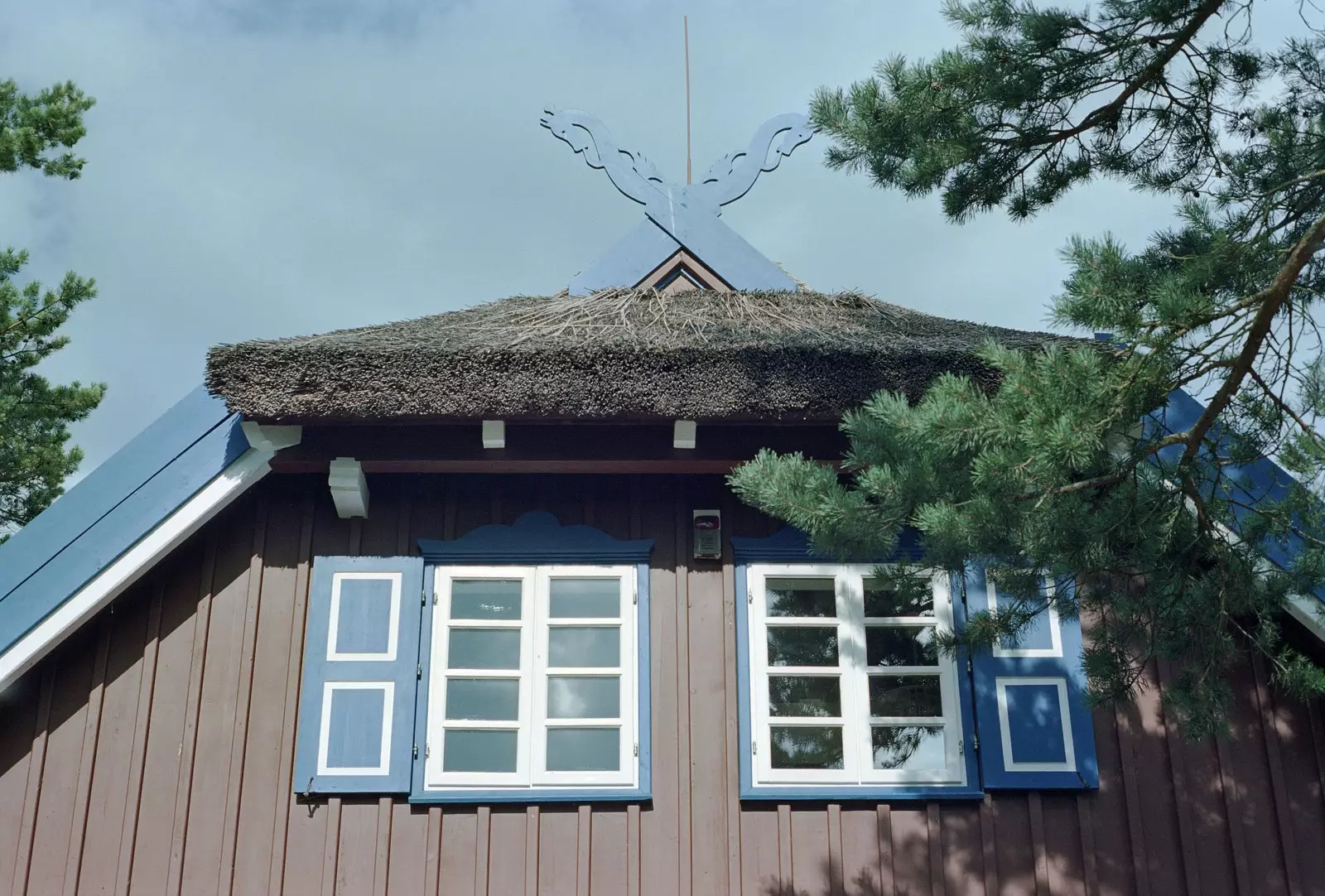
Thomas Mann House Museum
When the wind grants a break in the highest part of the dunes, nature returns to claim us. Highlights the parnidis dune , the one that offers the best perspective of the territory despite not being the highest. A wooden path leads us from Nida for two kilometers at its feet. It is imposing to see how it rises almost vertically from sea level, but a path makes the ascent easier for us. By the same, we arrive at iconic sundial , a gigantic obelisk located in the only point in the country from which you can see the sunset and sunrise in the sea - and from special interest in summer , given the minimum duration of the night.
If we advance along the dune we reach the main viewpoint of the park, with a very blue view of the two seas, the village of Nida, the forests and their Kaliningrad twins.
The road through Nida is a kind of pinball. If we continue south, the Russian border will require a visa and send us back north; in that direction, after 50 km (several buses cover the route) we will have to wait for the ferry to return us to the Lithuanian mainland . It is a route that can also be completed by bicycle, as there are several enabled trails, or partially on foot.
The visa, however, gives us free access to the wildest and most disorderly area of this isthmus: its Russian side. Most of the natural park is uninhabited. The last towns are also the tourist towns of Zelenogradsk and Svetlogorsk , of pure baltic style . From there, a couple of minimal urban centers dot a natural park that is much more rugged and leafy than its Lithuanian counterpart.
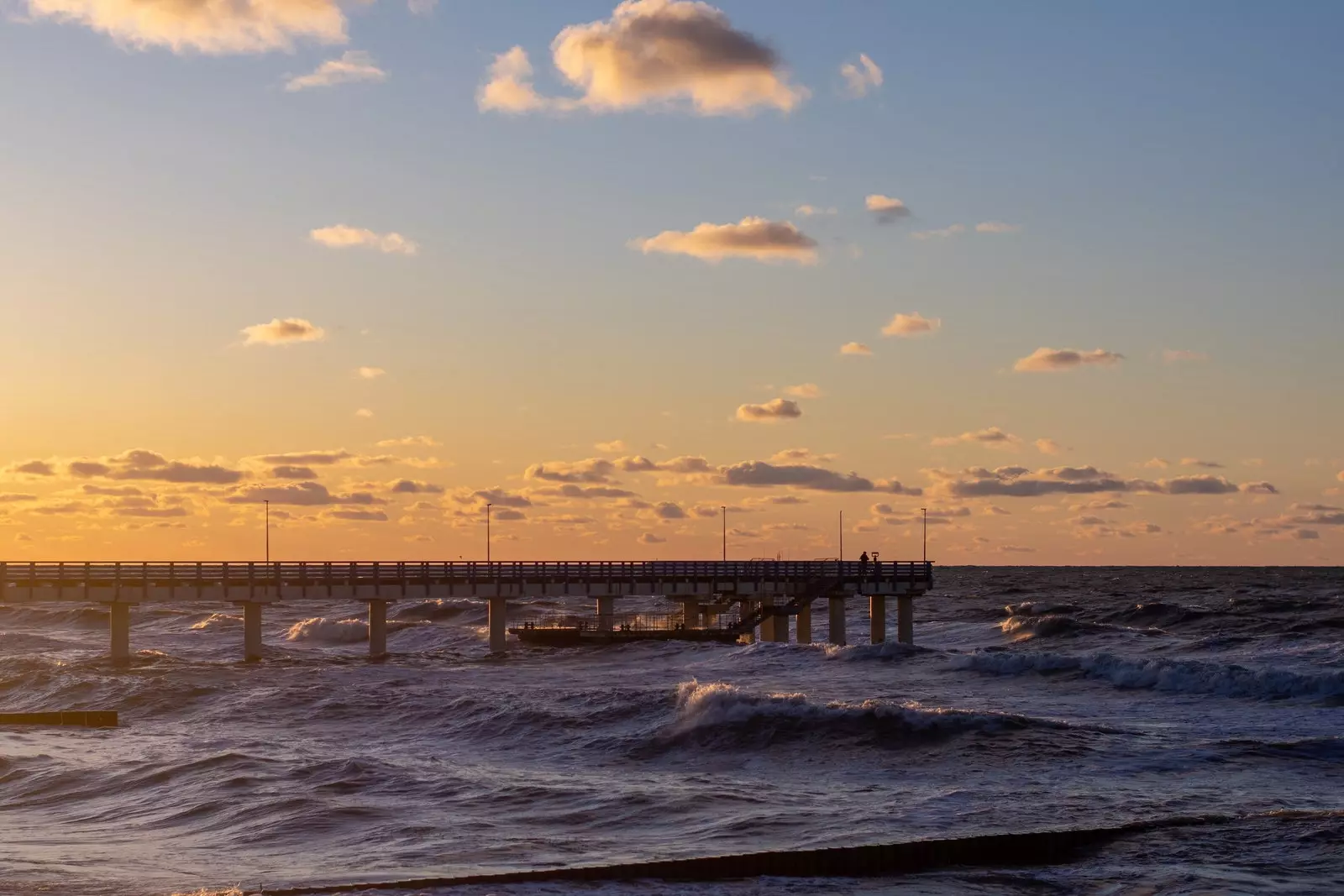
Zelenogradsk
Highlights the dancing forest (or drunken forest), which was planted in the early 1960s . A main path of about a kilometer crosses it and shows us the unlikely shapes of the trunks of these trees. Although not as flashy its history related to the famous "slippery" German school that existed until before World War II does feed curiosity.
Their swampy areas make this park a key station on the migratory routes of hundreds of animal species. One of the most charismatic and least visited spots is the so-called Laguna de los Cisnes, nestled between trees and dunes.
Around it, a 4-kilometre route shows us the least known part of the natural complex and from which the only mobile dunes are best appreciated . From the dune of Olenya Buddha you see the mentioned Parnidis : We are at the highest point of the isthmus, with a view of other dunes, Swan Lake itself and wide sandbanks.
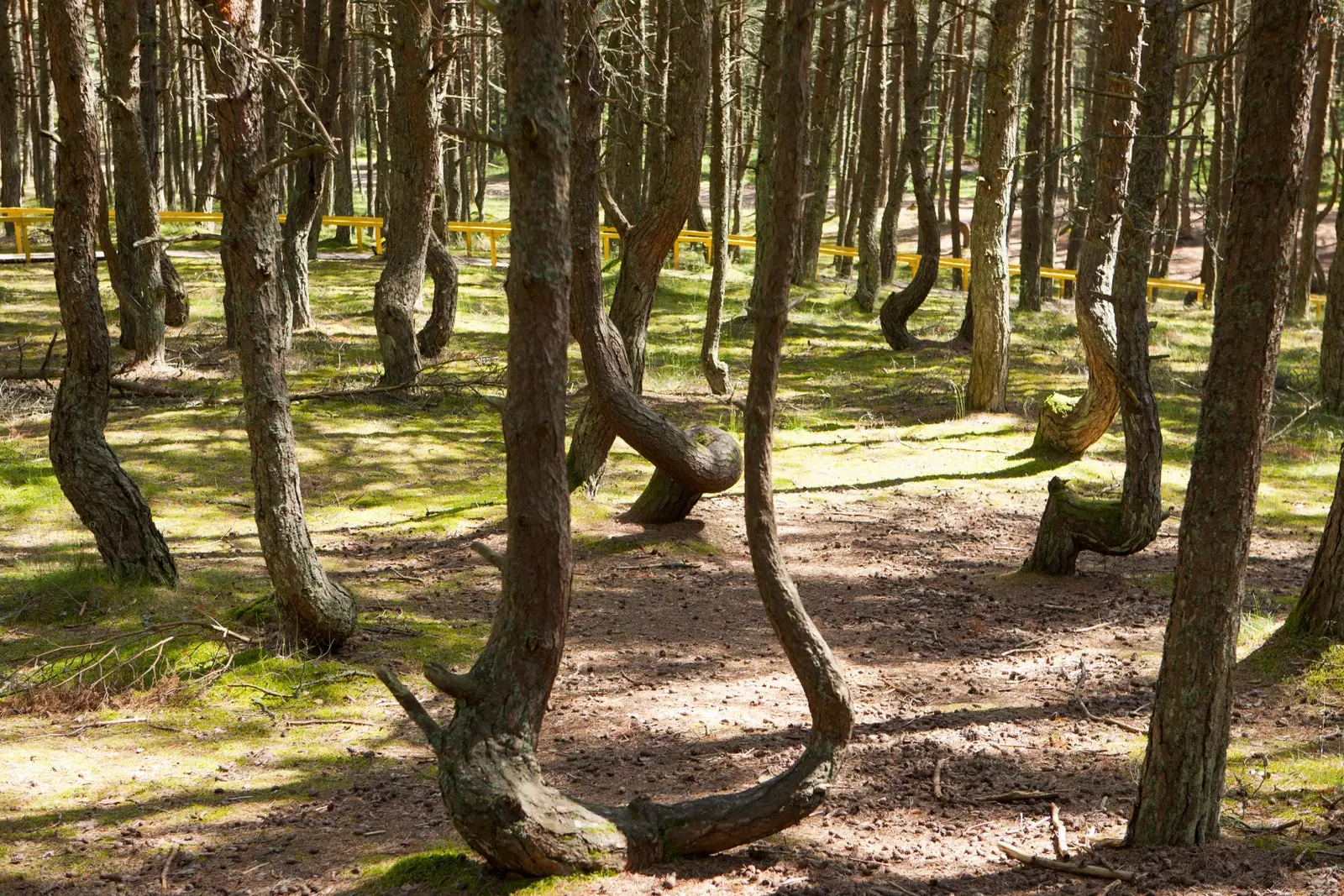
the dancing forest
From there, the natural park is like a great blue (sea), yellow (sand) and green (trees) flag , which constantly make this corner a fantasy land before our eyes. Ancient land of the extinct Curonians and only modernized as we move towards the exclave of Kaliningrad. The dozens of miles of wild beach are dotted with an abandoned resort, an ice cream parlor, some early '90s music, or a bus stop hidden by weeds.
On one side or the other, in any case, a flag that both Russia and Lithuania wave together with the pride of one who preserves a unique natural environment.
